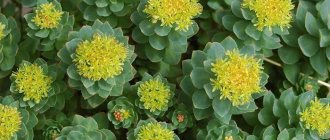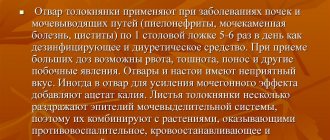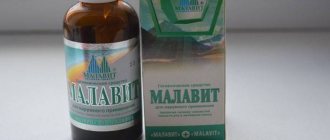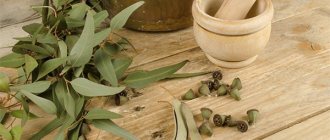Aloe extract is used as an injection solution and is indicated for the treatment of many diseases. The solution has a systemic effect on the body, eliminates inflammation, stimulates the immune system, destroying pathogenic organisms. The product is used in gynecology, urology, gastroenterology, and immunology. It has contraindications, so you should read the instructions before use. The liquid is used as an injection.
a house flower, popularly called agave, has medicinal properties and is used in medicine
Useful properties of the drug
What is aloe in ampoules used for? This solution is one of the best biological stimulants. Aloe has many healing qualities. The use of this drug allows you to achieve stimulation of individual organs and systems.
Aloe extract is characterized by the following actions:
- laxative;
- general strengthening;
- tonic;
- choleretic;
- antiseptic.
Aloe extract increases the rate of cell recovery, improves blood supply and nutrition to affected areas, improves tissue regeneration and cellular metabolism. It is for this reason that this drug is prescribed to patients who have undergone surgery. The components of the drug have an antimicrobial effect and also stimulate metabolism, which affects the rapid healing of damaged tissues.
Compound
The main active component of aloe in ampoules is aloe vera extract in liquid form. The solution also contains water for injection and sodium chloride.
The drug looks like a light yellow-brown liquid. The appearance of a suspension is acceptable, which precipitates during long-term storage.
The effect of the drug is due to the presence in the composition of the medicinal solution of such active substances as:
- hydroxymethylanthraquinone;
- nataloin;
- aloin;
- homonataloin;
- organic acids;
- glycosides.
The solution contains vitamins B, E, C and a number of elements necessary for the body.
Aloe is also available in the form of tablets, syrup with iron, juice, and tincture. The list of indications for different forms of release varies.
Indications
Why are aloe injections prescribed? Indications for the use of this drug are inflammatory processes, swelling, complications after infections and chronic diseases. The medication can also be used to accelerate metabolism, tissue and cell renewal. Doctors pay special attention to aloe extract due to its ability to increase the number of white blood cells. The production of these cells improves immunity. As a result, the body’s level of protection against pathogenic bacteria and microorganisms increases.
In neurology, aloe is often used in injections to strengthen the nervous system. Indications for the use of this drug also include cerebrovascular accidents. Aloe helps normalize brain activity. The components that make up the drug have a positive effect on the functions of the cardiovascular system. As a result, it is possible to improve the transport of oxygen in the body and increase the level of hemoglobin in the blood.
Biogenic stimulants, what are they?
In the thirties of the last century, Academician V.P. Filatov proposed calling “biogenic stimulants” a group of substances synthesized under certain conditions in certain tissues of plant and animal origin. Biostimulants promote rapid tissue restoration and have a general stimulating effect on the body.
These substances are synthesized only when tissues are exposed to unfavorable conditions (for example, if you tear off an aloe leaf and keep it in the dark) and are considered as an adaptation (adaptation) of the tissue to conditions unfavorable for the plant.
Biostimulants, which are used in medicine to treat various diseases, include some substances of animal (placenta suspension), plant (aloe extract) origin, as well as those obtained from peat (peat) and some mud (humisol, peloidin, FIbs).
Sources used:
- https://narodzdorov.ru/lekarstvennye-rasteniya/aloe-v-ampulah-instruktsiya-po-primeneniyu.html
- https://fb.ru/article/202333/ukolyi-aloe-lechebnyie-svoystva-i-protivopokazaniya
- https://tyubik.net/rastvori/396-ukoly-aloe-pokazaniya-k-primeneniyu.html
- https://bvk.news/zdorove/nm/ekstrakt-aloe-v-ampulah.html
- https://healthperfect.ru/aloe-ukoly.html
- https://polza-aloe.ru/svoystva-aloe/svoystva-aloe-ukoly-aloe-neotsenimye-lechebnye-svojstva.html
- https://aromawelt.ru/volksmedizin/aloe-ukoly-lechebnye-svojstva-i-protivopokazaniya.html
- https://luxmama.ru/ukolyi-aloe-pokazaniya-i-protivopokazaniya
Components of the drug
So what do you need to know about this? Aloe for injection includes the following components:
- dry plant extract;
- sodium chloride;
- water.
To obtain dry aloe extract, technological processes such as freezing and hydrolysis are used. The active components are the following substances: aloin, homonatoloin and natoloin. The composition of the drug also includes minerals, vitamins, acids, and glycosides.
When should it be used?
Indications for the use of this injection drug cover the following groups of diseases and problems:
- ophthalmological (progressive myopia, crystalline opacities, optic nerve atrophy, keratitis, conjunctivitis);
- gynecological (infertility, hormonal imbalance, ovarian cysts);
- dermatological and cosmetological (various skin lesions, non-healing wounds, trophic ulcers, acne);
- disturbances in the gastrointestinal tract (cholecystitis, gastritis, colitis, loss of appetite, gastroduodenitis, digestive imbalance);
- male infertility (agagave increases sperm activity);
- prostatitis and other urogenital diseases;
- diseases of the lower respiratory tract (pneumonia, bronchitis, tuberculosis, bronchial asthma);
- neurological diseases (neuralgia, neuritis);
- scar tissue characteristic of the recovery period after a stroke (will resolve under the influence of the drug);
- deteriorated sense of smell and hearing;
- damaged tissue (abrasions, wounds, burns);
- hypochromic anemia with decreased hemoglobin.
Indications for use
Let's look at this in more detail. In drug therapy, aloe injections are used to treat diseases of various systems and organs.
These include:
- ophthalmological diseases (aloe is effective for myopia);
- gynecological ailments (endometritis, adnexitis);
- male infertility;
- diseases of the digestive tract (peptic ulcer of the duodenum and stomach);
- neurological abnormalities;
- dermatological ailments (trophic ulcers);
- disorders in the functioning of the respiratory tract (chronic bronchitis, pneumonia).
The drug is also prescribed in the postoperative period to restore the body. It promotes rapid resorption of scar tissue. Aloe extract is effective for loss of smell and hearing. However, it should only be used as prescribed by your doctor. The specialist must first examine the patient. Self-administration of the drug can be very dangerous.
It should also be taken into account that long-term use of aloe can lead to a decrease in potassium levels in the body. This helps to increase the level of exposure to antiarrhythmic drugs and cardiac glycosides. The risk of developing potassium deficiency may also develop when loop diuretics, corticosteroids and licorice-based drugs are used concomitantly with aloe liquid extract. Liquid preparations based on the component under discussion enhance the effect of laxatives, as well as drugs responsible for stimulating hematopoiesis.
general information
As a rule, ampoules of the product contain a dry oxidizable succulent extract obtained from dried raw materials or an aqueous extract isolated from leaves kept in the dark and cold. Saline solution and injection water are used as auxiliary components.
Liquid aloe extract has a faint, distinctive aroma, and the color can vary from yellowish to reddish-brown. The drug is a biogenic stimulant and has a wide range of applications.
It is important! Solutions intended for injections are never prepared from plants grown indoors. In this case, the succulent juice will contain a number of harmful impurities. Extracts that are produced by the pharmaceutical industry undergo a set of mandatory purifications and only after that are packaged, put on sale and used for their intended purpose.
Intramuscular administration
This method of injection can only be used in consultation with a qualified physician. The manufacturer recommends administering the medicine exclusively by the subcutaneous method. With intramuscular administration, a rapid therapeutic effect can be achieved in case of urgent need. Such injections are given once a day, the minimum volume is 1 ml. It is worth noting that intravenous administration of the drug is not effective. The positive effect does not depend on the speed of delivery of the active substances, but on the duration of their effect.
Aloe injections: medicinal properties and contraindications, price
The cost of 10 ampoules of 1 ml of aloe aqueous solution for injection is on average 200 rubles. That is, such a drug is available to many patients. But, taking into account contraindications and possible adverse reactions, before purchasing such a medicine, you should consult with a specialist about the advisability of its use in a particular case.
Course of treatment: features
Many patients are interested in how much aloe should be used. The instructions for use recommend fairly long courses - from 30 to 50 injections. In some cases, if positive dynamics are observed, the course of treatment may be changed. For example, in ophthalmology, injections can be replaced with drops. There are also a number of diseases for the treatment of which it is recommended to gradually increase the dosage of the drug. One of these diseases is tuberculosis. Initially, the dosage is 0.2 ml, which is increased over time.
Aloe injections are quite painful. This is completely normal. The patient is first given a small dose of novocaine to numb the procedure. The drug should be administered only with a thin needle. Usually, together with a course of aloe, the patient is prescribed a course of vitamins B1, B6 and B12.
Price
The drug can be purchased in an online store, ordered through the official manufacturer’s catalog or in a regular pharmacy upon presentation of a prescription. The cost of the medicine may vary depending on the number of bottles in the package and the manufacturer of the medicine. Approximate prices for aloe in Moscow:
| Name of pharmacy chain | Price, rubles |
| Gorzdrav | 131 |
| Health Formula | 112 |
| Ozerki | 115 |
| Planet Health | 142 |
| ASNA | 138 |
| Sanitas | 173 |
| Zdorov.ru | 96 |
| FITA Pharmacy | 160 |
| Pharmacy No. 5 and 8 | 129 |
| Antique pharmacy | 145 |
| Economy | 102 |
| Sun | 140 |
Contraindications for use
This aspect deserves special attention. Who should not use aloe in ampoules? Instructions for use contain the following list of contraindications:
- hypertensive heart disease;
- acute forms of gastrointestinal tract diseases;
- heart and kidney failure;
- uterine bleeding;
- cystitis;
- haemorrhoids;
- anemia;
- intestinal obstruction;
- secretion of sputum with blood.
There are also age restrictions on taking the drug. It is not prescribed to children under 3 years of age. The medication should be administered to elderly people with caution. In addition, a person may have an individual intolerance to aloe. In this case, injections are contraindicated.
Instructions for use
Aloe juice extract is contained in ampoules, each of which is used for one-time use. The solution is administered in three ways:
- subcutaneously;
- intramuscularly;
- orally.
Aloe is used subcutaneously to provide an effect only in the affected area. If you use intramuscular injection, the effect will be on the entire body. It is unacceptable for the drug to enter a vein.
The extract is used in courses over 2-3 weeks. The number of aloe injections is selected by the doctor, depending on the patient’s health condition and the presence of the disease. It is recommended to take a break of 2-3 months between courses of taking the drug.
In rare cases, doctors prescribe oral consumption of the extract to treat stomach ulcers caused by the bacterium Helicobacter pylori.
Thanks to its rich chemical composition, aloe has a positive effect on the human body
pharmachologic effect
The solution has different types of effects on the body:
- Stimulates digestion. The product contains vitamins and enzymes that activate the action of the digestive glands. Hydrochloric acid begins to be produced in large quantities, so a person’s appetite increases.
- Improvement of colon function. Peristalsis is activated, resulting in a laxative effect.
- Strengthening the regeneration of mucous membranes and skin surfaces.
- Suppression of the action of Helicobacter pylori, which causes peptic ulcers of the stomach and duodenum.
- Destruction of influenza virus, herpes.
- Antibacterial effect provided by aloe solution and the alcohol it contains.
- Immunostimulation due to the intake of copper, zinc, selenium, and vitamins into the body.
For some diseases, aloe juice does not have a sufficient effect. Therefore, it is recommended to use it in complex therapy with other drugs.
The range of preparations with aloe is large and, subject to the instructions for use, they can support human health
Indications and contraindications
The drug has characteristic medicinal properties and contraindications. The extract is indicated for the following conditions and diseases:
- inflammatory diseases of the digestive tract;
- decreased secretion production by the mucous membrane of the digestive tract, thereby reducing the digestion process;
- constipation;
- infectious and viral diseases of the upper respiratory tract (ARVI, herpes infection);
- infectious and viral diseases of the lower respiratory tract (bronchitis, pneumonia);
- inflammatory conditions of the skin;
- penetration of bacterial infection into damaged skin surfaces;
- ulcerative skin diseases;
- burns of various origins (thermal, radiation, chemical);
- gynecological diseases (vulvitis, endometritis, tubal obstruction);
- urological diseases (prostatitis);
- ophthalmological diseases (inflammation of the eyelids, conjunctival membrane, cornea);
- inflammatory diseases of nervous tissue.
the drug has a therapeutic effect, but also has contraindications that should be familiarized with so as not to harm the body
Despite the large number of indications for use, the extract can not be used by all patients. If there are the following contraindications, use of the product is prohibited:
- increased secretion production in the digestive tract;
- increased intestinal motility, leading to dilution of stool;
- inflammatory diseases of the colon (proctitis, hemorrhoids) and other parts of the intestine, including appendicitis;
- narrowing of the intestinal lumen, as a result of which food masses pass through it with difficulty;
- epigastric pain, the cause of which has not been established;
- severe cardiovascular disorders (heart failure, heart rhythm disturbances, hypertension);
- liver diseases (liver failure, hepatitis, fatty degeneration);
- kidney diseases (glomerulonephritis, pyelonephritis, renal failure);
- pregnancy, lactation.
There are no data on the use of the solution during breastfeeding. To avoid causing adverse reactions in newborns and infants, it is recommended not to use the product.
If an aloe solution has been used and adverse reactions occur, the patient’s condition worsens during the period of illness, treatment is immediately canceled and a doctor is consulted.
Types of injections, dosage and course of treatment
Aloe liquid is used for application to the skin, oral use, and injection. Injections are given under the skin or into the muscles. The method of administration depends on the patient’s health status, the presence of indications and contraindications, concomitant diseases, and the area of application of the drug.
If you use aloe intramuscularly, the maximum effect will be achieved. The product is distributed throughout the tissues of the body, resulting in a general effect.
Subcutaneous administration of the drug
For subcutaneous administration, a dosage of 1 to 4 ml is used. It is recommended to start with a minimum dose so as not to provoke the occurrence of adverse reactions.
Aloe is given subcutaneously, 1 injection once a day. To do this, use a thin needle. The skin surface is pre-disinfected with an alcohol solution or other antiseptic. The skin is peeled back and the drug is injected slowly. It will be absorbed gradually, so the product works throughout the day. After the injection, the skin is re-treated with alcohol; You can leave the cotton wool tied with a bandage. This will prevent painful microflora from getting inside.
Intramuscular administration of aloe
Aloe extract liquid for intramuscular injection completely eliminates the risk of the product getting into a vein. During the injection, it is important not to get into the nervous tissue, as this will cause acute pain and neuralgia is possible. To give an injection correctly, follow some rules:
- the ampoule is carefully opened so that glass fragments do not get inside or injure a person;
- use a syringe to draw up the required volume of liquid and release air;
- inserted into the upper outer square of the buttock;
- the needle is immersed into the muscle 2/2 of its length;
- the drug is administered slowly, you can pre-treat the skin surface with an anesthetic solution or inject it together with the drug;
- Cotton wool soaked in alcohol is applied to the injection site; it can be left on the affected area by gluing it with a band-aid.
To avoid excessive pain, injections are given in different places.
in folk medicine there are many recipes with aloe, which are indicated for children's use
For children
Young children are not recommended to use the extract to avoid the formation of adverse reactions. Up to 12 years of age, allergic reactions to aloe and dyspeptic disorders may occur. Therefore, only oral, subcutaneous administration is used for those aged 13 years and older. It is recommended to use the products with caution in a minimum dosage.
During pregnancy and lactation
The injection is completely contraindicated during pregnancy. This can cause an allergic reaction, which will lead to disruption of nutrition of the uterus through the placenta. The drug increases muscle tone, so due to overstrain of the uterus, premature birth is possible.
No studies have been conducted on the effect of the drug during breastfeeding. It is recommended to stop using it so as not to cause negative reactions in the baby. Allergies may occur.
Drug interactions
When using aloe juice in ampoules, the instructions for use must be strictly followed. Possible drug interactions with certain drugs:
- antiarrhythmics, cardiac glycosides - enhanced action due to a decrease in potassium content in organs and tissues with long-term use of aloe;
- diuretics, licorice extract, corticosteroids - potassium deficiency in the body;
- medications that stimulate hematopoiesis - increased effect;
- laxatives - increased intestinal motility, possibly exceeding the effect until diarrhea occurs.
The doctor takes into account drug interactions to enhance the effect of various drugs or if it is impossible to use them together.
aloe supports women's health and beauty
Use for gynecological purposes
Let's look at this in more detail. For some gynecological diseases, aloe injections are prescribed intramuscularly. The instructions do not allow the use of the drug during critical days. If a woman is undergoing treatment, it should be stopped during menstruation. During pregnancy, the use of the drug is also contraindicated. In the early stages, aloe extract can cause miscarriage, and in later stages it can lead to premature birth.
Indications for the use of aloe injections are ovarian cysts, obstruction of the fallopian tubes, cervical erosion, inflammation of the appendages. In addition, with the help of aloe extract you can strengthen your immune system. This will prevent the development of pathologies and inflammation in the future.
Studies have confirmed that the use of aloe extract in a young body can lead to the development of malignant tumors. It is for this reason that it is not recommended to use this remedy without appropriate indications. It is usually not prescribed to young women under 40 years of age.
Read more about use in gynecology
Aloe injections in gynecology are used to achieve the following effects:
- prevention of adhesions after surgical intervention on the pelvic organs of a woman;
- relieving inflammation, resorption of cyst contents in the ovaries, especially with polycystic disease;
- complex treatment of inflammatory diseases of the cervix, tubes, ovaries with other drugs, the effect is achieved due to anti-inflammatory, antibacterial and restorative effects;
- prevention of relapse of infectious and inflammatory diseases of the pelvic organs.
For women, aloe injections in gynecology are not applicable during menstruation. They cause increased bleeding due to strong blood flow to the uterus.
For women, the drug is also contraindicated during pregnancy. This causes stimulation of labor. Therefore, treatment of inflammatory conditions of the pelvic organs is carried out before conception or after completion of lactation.
Use in cosmetology
Aloe ampoules are widely used in cosmetology. The instructions allow the use of this medication for preparing masks. The main advantages of the drug are such qualities as rejuvenation and toning of the skin. To achieve a cosmetic effect, moisturizing masks are used. With their help, you can achieve the resorption of small scars and smooth out wrinkles.
To prepare the mask, the following components are used:
- one ampoule of aloe extract;
- a tablespoon of sour cream;
- a teaspoon of castor oil;
- a tablespoon of honey.
All ingredients should be mixed until a homogeneous mass is obtained and applied to the skin of the face. The mask should be kept on for 20 minutes. After this, the residues are washed off with warm water. The rejuvenating effect will be noticeable after 2-3 procedures.
Useful qualities of the plant
Aloe is a common houseplant due to the fact that it is unpretentious to climate change and does not require special care. Despite the fact that this flower can be seen in every second home, most people know little about its healing properties. Aloe juice is most often used. Its beneficial properties and contraindications have been known to people of different nationalities since ancient times. It was used to treat colds and viral infections, treat wounds for antiseptic purposes, and fight dermatological problems and skin burns. To this day, the juice of the plant is widely used in folk medicine.
In fact, the wide spectrum of action of aloe has been confirmed. The medicinal properties and contraindications for the use of this plant for medical purposes have been studied by scientists, doctors and traditional healers for a long time.
With its help, diseases of the female reproductive system, problems of the gastrointestinal tract, inflammatory processes in dentistry, burns and various dermatological diseases are treated. Aloe is used in cosmetology for rejuvenation and elimination of pigmentation and much more.
The medicinal properties of aloe vera are as follows:
- anti-inflammatory;
- antibacterial;
- antifungal;
- moisturizing;
- regenerating;
- soothing and wound healing;
- painkillers;
- immunorestorative.
Patient reviews
What is usually of interest to patients who have been prescribed aloe injections? Instructions, injection techniques and reviews - this information may be useful to them. Many speak positively about a medicinal product such as aloe extract. This product helps strengthen the immune system and enhance the body's protective functions. In addition, aloe has shown high effectiveness in the treatment of bronchitis and stomach ulcers.
Patients note the pain of injections as the main disadvantage. This is normal for this drug. Novocaine is usually used for pain relief. The great advantage of aloe extract is that this drug has virtually no side effects. In some cases, signs of individual intolerance may be observed.
Review of reviews about treatment with agave
Reviews about the use of aloe for medicinal purposes are mostly positive.
People note its anti-inflammatory, healing, restorative, and immunostimulating properties, which help to use agave in the treatment of a variety of diseases. There are more positive reviews about the drug than negative ones. It is noted that aloe injections:
- relieve symptoms of diseases, reduce or eliminate pain;
- improve blood circulation;
- increase the vitality of the body;
- strengthen the immune system;
- accelerate wound healing;
- improve skin condition.
Some patients find aloe injections ineffective; reviews also indicate:
- the appearance of side effects (nausea, vomiting, diarrhea, increased body temperature and blood pressure);
- the occurrence of allergic reactions (redness, itching, skin rashes);
- painful injections;
- high cost of the drug during a course of treatment.
Side effects
Due to the high concentration of bioactive substances in the drug, there is a risk of complications. The manufacturer warns of side effects from the gastrointestinal tract, immune and cardiovascular systems.
Some patients experience other side effects from the drug. Among them are:
- itching, hyperthermia, pain at the injection site;
- dizziness;
- feeling of a rush of blood to the pelvic organs;
- increased body temperature;
- increased profuseness of menstrual flow.
A feeling of tide in the pelvic area is experienced not only by those patients who use aloe in gynecology; an injection for ophthalmological, gastroenterological, cardiovascular pathologies can give the same side effects.
Gastrointestinal organs
When using the drug, patients may experience side effects from the digestive tract such as:
- stomach ache;
- dyspepsia;
- sore throat sensation.
The decision to continue treatment should be made together with the attending physician.
The cardiovascular system
There is a risk of developing negative manifestations from the heart and blood vessels.
Some patients experience increased blood pressure during therapy. In such a situation, injections are canceled.
The immune system
A number of patients develop allergic reactions.
Due to the immune response to the biostimulant, a body rash, itching, hyperemia, and urticaria may appear.
How else can you use the injection solution?
Due to the ability of the product to stimulate tissue regeneration and tonic, restorative effect, it is used in cosmetology. Added to masks that help provide the following effects for the skin:
- hydration;
- regeneration of tissue, scars, scars;
- smoothing out wrinkles.
aloe extract has a beneficial effect on the skin, which makes it possible to use it in cosmetology
To prepare a cosmetic product, mix the ingredients:
- aloe plant extract, 1 ampoule;
- sour cream, 1 tbsp. l.;
- castor oil, 1 tsp;
- honey, 1 tsp.
Place all ingredients in a bowl and mix thoroughly. Apply a thin layer to the face; it can be applied to the skin of the eyelids and lips. Wash off with running warm water after 20-30 minutes. The use of the mask is carried out in courses. Each of them is 7 days.
The cosmetic industry produces a variety of perfume products based on aloe extract
Liquid aloe extract in ampoules
Liquid succulent extract is a biostimulant - a biologically active substance that can have a stimulating effect on any organ or on the vital functions of the entire organism. Aloe in injections has a wide range of pharmacological effects: anti-inflammatory, regenerating, antiseptic.
The active component of the medicinal solution includes:
- hydroxymethylanthraquinone;
- homonataloin;
- aloin;
- nataloin;
- glycosides;
- micro- and macroelements and vitamins of different groups, including B, C and E.










